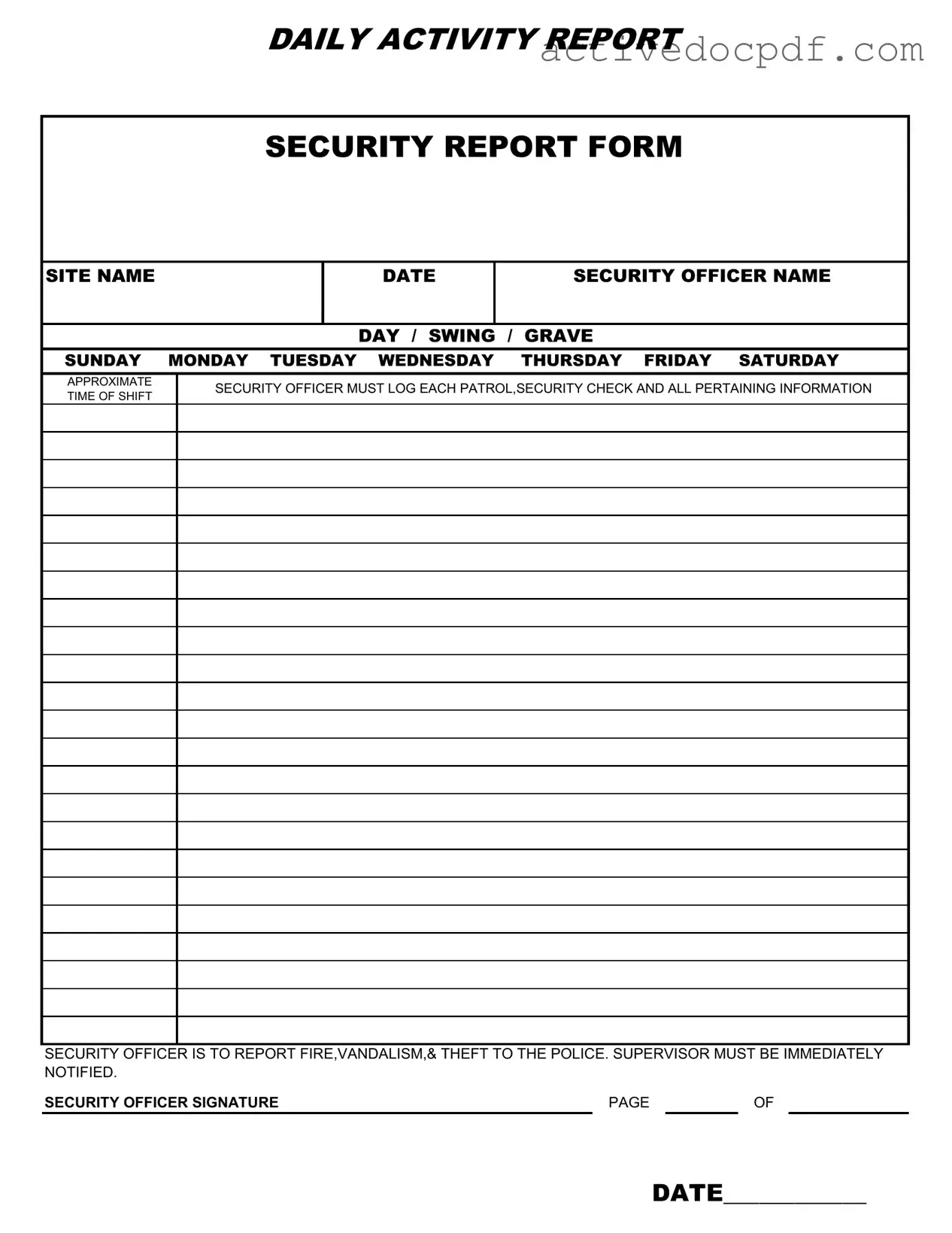The Security Guard Daily Report Sample form is designed to document the daily activities of security personnel. It serves as a record of patrols, security checks, and any incidents that occur during a shift. This documentation is crucial for maintaining safety and accountability at the site.
The form requires the following information:
-
Site name
-
Date
-
Security officer's name
-
Shift type (Day, Swing, Grave)
-
Days of the week
-
Approximate time of the shift
-
Details of each patrol and security check
-
Incident reports (e.g., fire, vandalism, theft)
-
Security officer's signature
Incidents such as fire, vandalism, and theft must be reported immediately. The security officer should document the details of the incident on the form and notify the police. Additionally, the supervisor must be informed without delay to ensure a prompt response.
Why is it important for security officers to log patrols and checks?
Logging patrols and checks is essential for several reasons. It helps establish a routine, ensures thorough coverage of the area, and provides a record that can be referenced in case of disputes or investigations. This practice also enhances accountability among security personnel.
What should a security officer do if they observe suspicious activity?
If a security officer observes suspicious activity, they should document it in the report. Additionally, they must notify their supervisor and, if necessary, contact law enforcement. Prompt reporting can prevent potential incidents and ensure safety.
Yes, the Security Guard Daily Report form should be completed for every shift. Consistent documentation is critical for maintaining a comprehensive record of security activities and incidents, which can be vital for future reference.
While the basic structure of the Security Guard Daily Report form is standardized, it can be modified to suit the specific needs of different sites. Adjustments may include adding sections for unique site concerns or additional reporting requirements.
What happens if a security officer forgets to sign the report?
If a security officer forgets to sign the report, it may be considered incomplete. This could lead to issues with accountability and documentation. Officers should be diligent in ensuring that all required fields, including their signature, are filled out before submitting the report.
How long should the completed reports be kept?
Completed reports should be retained for a specified period, typically ranging from one to three years, depending on company policy and legal requirements. Keeping these records helps maintain a history of security activities and can be useful in investigations or audits.
Who has access to the completed reports?
Access to completed reports is generally restricted to authorized personnel, such as security supervisors and management. This ensures confidentiality and protects sensitive information while allowing those responsible for security oversight to review the reports as needed.
